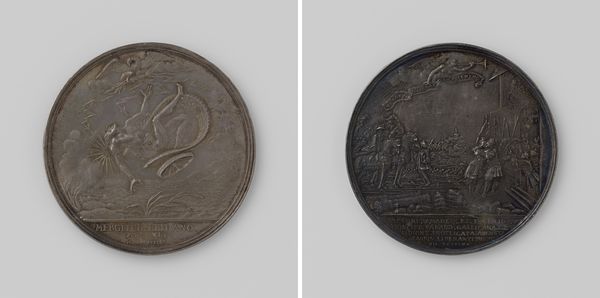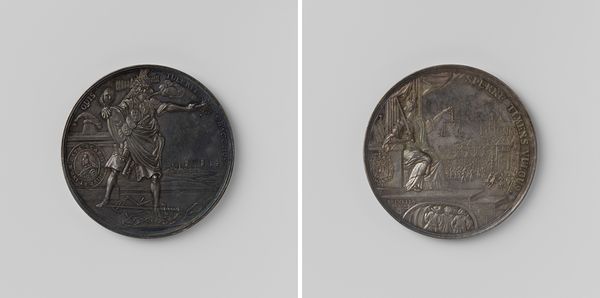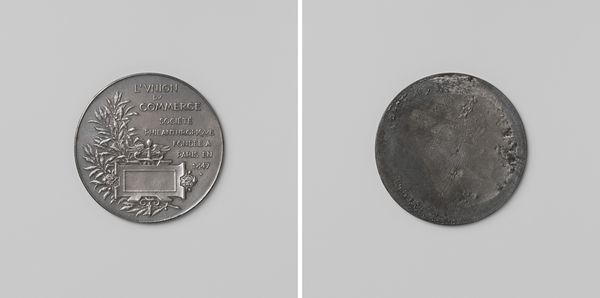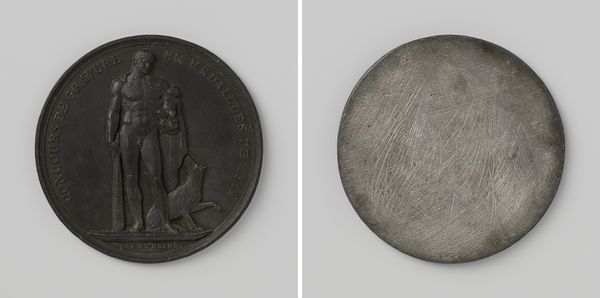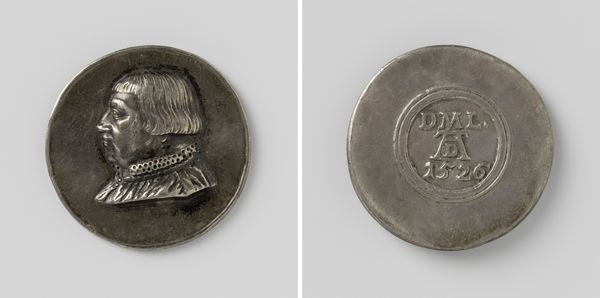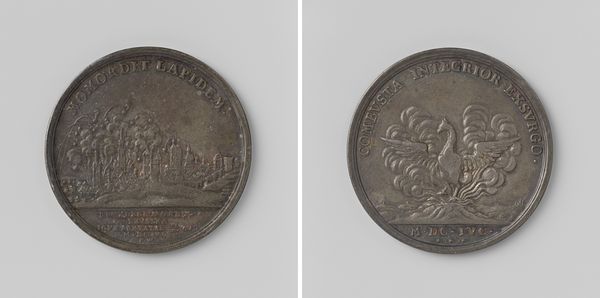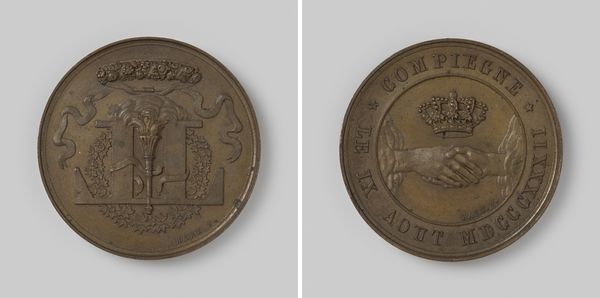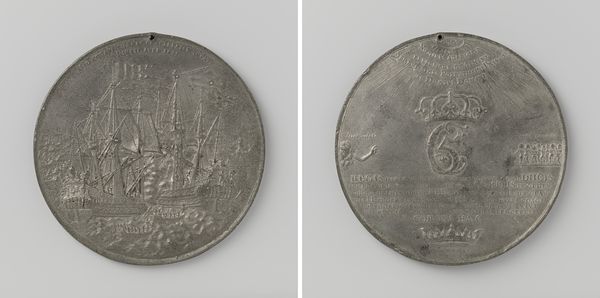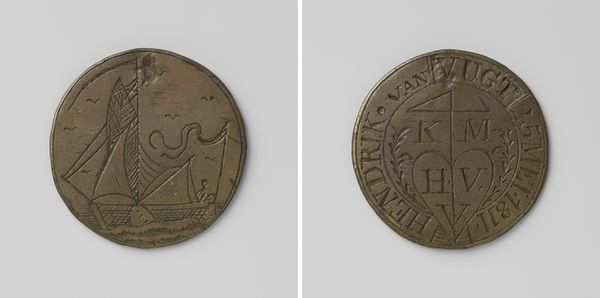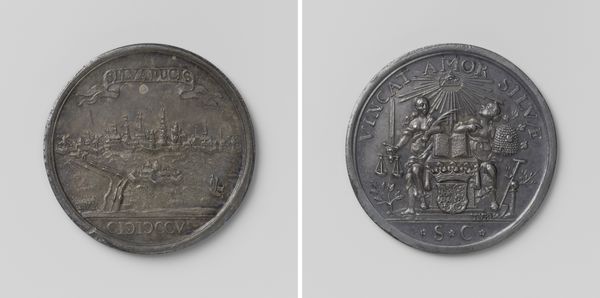
print, metal, relief, sculpture, engraving
#
medieval
# print
#
metal
#
sculpture
#
relief
#
11_renaissance
#
sculpture
#
history-painting
#
engraving
Dimensions: diameter 3 cm, weight 7.94 gr
Copyright: Rijks Museum: Open Domain
Editor: This intriguing piece, titled "Overlijden van Ernst, aartshertog van Oostenrijk," or "Death of Ernest, Archduke of Austria", dated 1595, is housed at the Rijksmuseum. It's an engraving, I believe on metal. It looks almost like a coin or a medallion. It is striking because the design is sparse on one side, while very elaborate on the other. What do you see in this artwork? Curator: Immediately, the materiality of the object speaks volumes. This isn’t merely a commemorative piece; it’s a potent statement on power, value, and the social order. Metalwork in this era, particularly engraving, was a specialized craft, indicative of wealth and patronage. Who was involved in the process of creation? From the mining of the ore, smelting it to make the base medium and refining of that, and subsequently designing, engraving the artwork itself and producing copies of the engraving through its lifecycle; each worker and group represent specific interests of contemporary society. This engraving itself highlights how readily distributed news and propaganda was, and invites us to ask whether the means of producing the images of powerful figures themselves held symbolic or social value. Editor: That's interesting, so you're thinking about it not just as art, but as something that required significant labor to create, and circulated widely? Curator: Precisely. The metal's intrinsic worth coupled with the craftsmanship elevates it beyond mere art object. Also consider that metal could be melted and reused; it also can be transported very easily. The printmaking aspect too raises questions of circulation. Was this purely commemorative for a small elite, or intended for wider consumption, shaping public perception? Each side offers a visual representation that the patron wanted distributed widely in various hands, literally. Editor: That's such a different way of thinking about it than I initially had, very insightful. I was simply thinking about its historical significance and visual symbolism. Curator: Indeed. By looking at how such an image would have been made and by whom, its place in history comes sharply into focus, a commodity of communication and remembrance. Editor: Thank you. Now, looking at the historical object and material culture, I can clearly grasp better the various manufacturing methods that brought this engraving into existence and can envision and conceptualize the patron’s intentions.
Comments
No comments
Be the first to comment and join the conversation on the ultimate creative platform.
